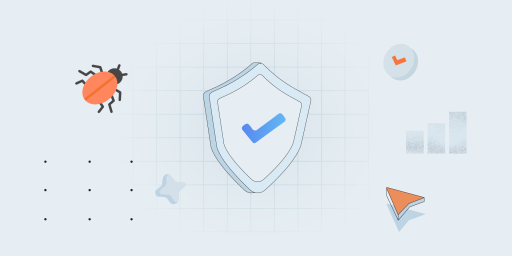Pilot testing is evaluating the system and providing feedback from a selected group of people before a full deployment of the system.
First of all, what does pilot testing mean, and why is it necessary for software quality assurance?
Pilot testing is performed to verify functionalities under real-time conditions before moving into production. It assists in researching the risks, time, and efficiency of the project. Pilot testing saves project costs by highlighting expensive bugs. It involves users in a broad deployment and implementation stage of the development process.
So, what is the purpose of pilot testing in software development?
The Purpose of Pilot Testing and How It Works
Why is pilot testing required? It helps in early bug detection. The QA team is the first to benefit from establishing pilot testing. Why? It gives the ability to check the continuous usage of a product under typical conditions. The process helps to figure out hidden problems, analyze them thoroughly, and find a solution. Additionally, it provides the team with the user response to the newly added feature or any minor change in the software.
The Advantages of Pilot Testing
Among the advantages of pilot testing are:
- Increased product quality;
- Smoother and cheaper software rollout practice;
- And market analysis from the point of view of a targeted audience.
After performing pilot testing, the team should have the answers to the following questions:
- Is the system ready for full-scale implementation?
- Are there any better ways of handling money and time in the project?
- Does the update have the expected reaction of the target users? If not, what should be replaced or improved?
There are a couple of things for a team to do before starting pilot testing.
- A team must determine feasibility. Do they have enough memory or time, or processors to perform a certain update? Can they afford an update? How much time a certain update might take to be implemented? Can the company allow spending that much time on one update only?
- A team must determine the cost. How much does it cost to implement an update? If it is going to need a lot of money, the team should know that in advance.
- A team must analyze system performance. How does the update affect the performance of the software? Does it slow the performance down?
- One more fact to look up to is a risk. What is the amount of risk involved? Can the company accept that level of risk or not? The main task is to mitigate it as much as possible.
How to Do Pilot Testing
Pilot testing is done after User Acceptance Testing (UAT), right before the Production phase. The level of testing depends on how big the project is. But the components are always the same:
- Planning;
- Preparation;
- Implementation;
- Evaluation;
- Launch.
Pilot Testing Guide
As with any other type of testing, this one has to be planned first. The team must be clear on the objectives and goals. What are the expected results? What do they need to accomplish, and what is the goal of pilot testing in the current project? The purpose of making a plan is to have a guiding factor and a clear understanding of the objectives and activities to follow during the process.
Since the planning is over, the team moves to the next step – preparation. How much time does the test require? What length of time can be dedicated to the process? To get sufficient feedback, the proper amount of end-users should be selected. How big or small should a testing group be? How well does the group of testers represent the targeted audience? What kind of training do they need before starting the testing process? At this stage, they collect all additional data and set up the environment.
During the implementation phase, the selected group of users is provided with the scenarios real users might face interacting with the product. A set of specific tasks is performed with technology covering the required functionalities.
The steps performed and the results received are documented and evaluated. The team analyzes the software in terms of how difficult for the group the process of performing the tasks is, and what kind of response the program has. All participants should be able to share their feedback on the new update or technology throughout the whole process of testing. The main task is to figure out what works and what does not.
It is not a problem if a pilot test is overwhelmed with bugs. But it is a problem if bugs occur after the pilot check is over. The team has to ask accurate questions to get accurate results. If you do not want your pilot test to fail, work alongside a testing group. Monitor product performance continuously. The team is good to launch a product to the market if the requirements are met, reviews are positive, and software behavior is satisfactory. In a nutshell, production deployment can be done only if the results of the previous steps are as expected.
So, why is pilot testing important for debugging?
Pilot testing is like a rehearsal for a program. It evaluates and analyzes different parts of a system, providing a deep understanding of critical features before product launch. Thus, it gives a better view of how to meet your customers’ needs before the targeted audience interacts with the product in the real world. As a result, you save time and money on improving defects without letting the customers face those defects while using the product. You either improve bugs or find an alternative solution to existing problems.



